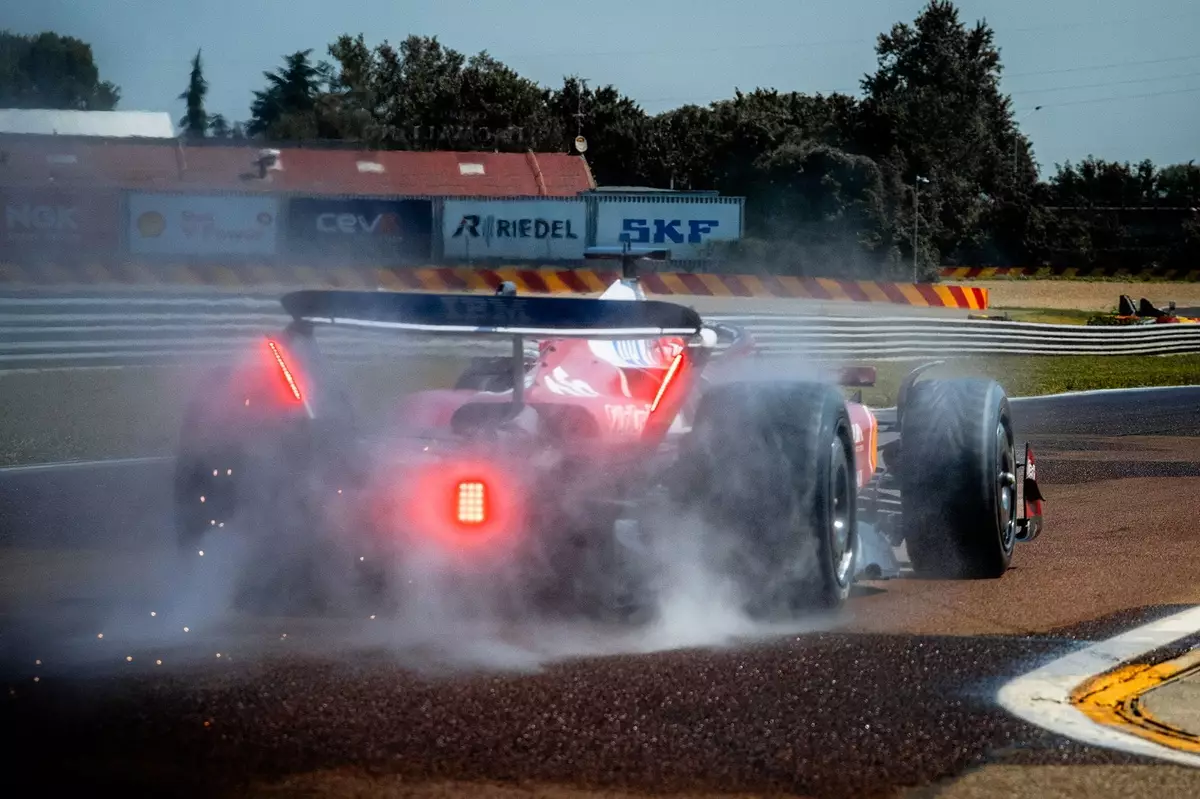In the high-octane realm of Formula 1, every millisecond counts, and the performance of tyres can often prove to be the deciding factor between glory and defeat. A fascinating insight emerges when considering the capabilities of Pirelli’s wet tyres, equipped with the astounding ability to push aside an astonishing 85 litres of water per second when operating at racing speeds. However, the reality of F1 races rarely offers these extreme conditions. Instead, heavy rain often brings races to a halt, as seen in peculiar episodes like the infamous 2021 Belgian Grand Prix disaster and more recently during the Sao Paulo race in 2022, where drivers opted for intermediates rather than risking their positions by switching to the full-wet tyres.
The Dilemma of Wet Tyres in F1 Racing
The intriguing irony lies in the concept that while wet tyres are engineered for optimum performance under wet conditions, they are seldom allowed to operate in such desirable scenarios due to the often fleeting nature of adverse weather in F1. The result is a race environment that has led to frequent red flags, as racers maneuver tentatively on intermediates, deferring the switch to full-wet tyres. In light of these challenges, it has become exceedingly clear that the currently manufactured wet tyres have fallen short of expectations. Pirelli, understanding this glaring inadequacy, has set its sights on future advancements, particularly focusing on the next-generation tyres slated for the all-new 2026 cars.
The Evolution of Wet Tyre Technology
Mario Isola, Pirelli’s motorsport manager, expresses optimism about the path ahead as the company redefines its approach to wet tyres. The aim is to blur the lines between wet and intermediate tyres, ensuring that drivers have more versatile options that cater to various racing conditions. Currently, the extreme wet tyres are rapidly reaching their thermal limits even in mildly damp conditions, resulting in their quick degradation. As they have seen limited usage in the season, the task at hand has become urgent; Pirelli needs to develop a tyre that can withstand a broader range of wet conditions while maximizing performance.
An essential part of this transformation is the validation of the new extreme wet tyre compounds. Pirelli’s latest tests at Ferrari’s Fiorano circuit involved utilizing ‘mule cars’ designed to mimic the stresses that the new-generation vehicles will experience. However, this approach, while innovative, presents inherent inaccuracies in testing, compounded further by uncooperative summer weather that hampered the accuracy of assessments. The window for performance testing is narrow, and precision is paramount in determining effective crossover points where switching from slicks to intermediates becomes advantageous.
Navigating the Crossover Dilemma
An often-overlooked yet critical facet of tyre performance in damp conditions is the concept of the ‘crossover point’—that moment in a race where drivers must transition from one type of tyre to another based on track conditions. Calculating this delicate balance is essential because it can affect lap times drastically. Traditionally, the industry-standard has indicated that drivers should make the switch when lap times dwindle to 112% of the dry pace. However, the previous-generation wet tyres only proved viable when drivers slowed to 120%, clearly indicating a pressing need for improvement.
Pirelli has embarked on a renewed mission to establish a more effective crossover point nearer to the desired 116%. Recent evidence suggests that the new wet tyres still presently sit at an awkward 118%, hinting at the multi-faceted challenge the brand faces. Despite this closeness to the target, they continue to fall short, emphasizing the urgency and magnitude of Pirelli’s task in refining their product to a more dependable and race-ready standard.
Pirelli’s ongoing pursuit of innovation in wet tyres speaks to the heart of Formula 1, where every detail can mean the difference between victory and defeat. As they aim to strengthen their offerings and embrace the challenges of changing weather conditions, they continue to confront the limitations posed by visibility, performance, and degradation. The competitive spirit of Pirelli and the sporting community hinges not only on refining tyre technology but also on ensuring that every driver is equipped to tackle Mother Nature head-on, transforming wet races from a rarity laden with uncertainty into thrilling spectacles of speed and skill.

